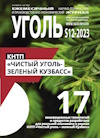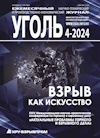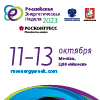
ECONOMIC OF MINING
Original Paper
UDC 004.93’1:336.226.2 © A.O. Rada, A.E. Timofeev, A.D. Kuznetsov, A.E. Fedulova, M.V. Sadikov, 2022
ISSN 0041-5790 (Print) • ISSN 2412-8333 (Online) • Ugol’ – Russian Coal Journal, 2022, № S12, pp. 120-126
DOI: http://dx.doi.org/10.18796/0041-5790-2022-S12-120-126
Title
IDENTIFICATION OF POTENTIAL OBJECTS OF TAXATION ON THE BASIS OF GEOINFORMATION SYSTEMS AND NEURAL NETWORKS
Authors
Rada A.O.1, Timofeev A.E.1, Kuznetsov A.D.1, Fedulova A.E.1, Sadikov M.V.2
1 Kemerovo State University, Kemerovo, 650000, Russian Federation
2 Ministry of Digital Development and Communications of Kuzbass, Kemerovo, 650000, Russian Federation
Authors Information
Rada A.O., PhD (Economic), Director of Institute of Digitalization, e-mail: rada.ao@kemsu.ru
Timofeev A.E., PhD (Technics) Head of development department of Institute of Digitalization, email: a.timofeev@i-digit.ru
Kuznetsov A.D., Director of the Center for Computer Engineering of Institute of Digitalization, email: adkuz@inbox.ru
Fedulova E.A., D.Sc (Economic), Head of Department of Economic Theory and Public Administration, e-mail: fedulovaea@mail.ru
Sadikov M.V. Minister of Digital Development and Communications of Kuzbass, e-mail: digital@ako.ru
Abstract
A fair and effective tax administration requires a high-quality information base. The purpose of the study is to develop a methodology for identifying potential objects of taxation in order to obtain accurate, up-to-date and cheap data on real estate objects in large areas for tax purposes using geographic information systems and neural networks. The Kuzbass geoinformation system (developed with the participation of the authors), the results of aerial photography from an unmanned aerial vehicle, and the U-net neural network for data processing were used. It has been demonstrated that such a software and hardware complex allows, in a short time at low cost, to enter accurate information about all real estate objects into the geographic information system. In the course of work in 11 cities of the Kemerovo region – Kuzbass, 20,141 potential objects of taxation were identified on an area of 1627 square kilometer. It is shown that the neural network significantly reduces labor and time costs when accounting for taxation objects. The payback period of the project on digital accounting of objects of taxation is calculated, which is less than 7 years.
Keywords
Geographic information system, Neural network, Real estate taxation, Image recognition, Property tax, Unmanned aerial vehicles, digital control, digital monitoring.
References
1. Alpanda S. & Zubairy S. Addressing household indebtedness: Monetary, fiscal or macro prudential policy. European Economic Review, 2017, 92(11), pp. 47–73. DOI: 10.1016/j.euroecorev.2016.11.004.
2. Prichard W. Reassessing tax and development research: a new dataset, new findings, and lessons for research. World Development, 2016, 80(4), pp. 48–60. DOI: 10.1016/j.worlddev.2015.11.017.
3. Levinson A. America’s regressive wealth tax: state and local property taxes. Applied Economics Letters, 2021, 28(14), pp. 1234–1238. DOI: 10.1080/13504851.2020.1807458.
4. Shan H. Property taxes and elderly mobility. Journal of Urban Economics, 2010, 67(2), pp. 194–205. DOI: 10.1016/j.jue.2009.08.004.
5. Fjeldstad O.-H., Ali M. & Katera L. Policy implementation under stress: Central-local government relations in property tax administration in Tanzania. Journal of Financial Management of Property and Construction, 24(2), pp. 129–147. DOI: 10.1108/JFMPC-10-2018-0057.
6. Manganelli B., Morano P., Rosato P. & De Paola P. The effect of taxation on investment demand in the real estate market: The Italian experience. Buildings, 2020, 10(7), 115. DOI: 10.3390/buildings10070115.
7. Asyakina L.K., Dyshlyuk L.S. & Prosekov A.Yu. Reclamation of post-technological landscapes: International experience. Food Processing: Techniques and Technology, 2021, 51(4), pp. 805–818. DOI: 10.21603/2074-9414-2021-4-805-818.
8. Singh A., Singh S.K., Meraj G., Kanga S., Farooq M., Kranjcic N., Durin B. & Sudhanshu. Designing geographic information system based property tax assessment in India. Smart Cities, 2022, 5(1), pp. 364–381. DOI: 10.3390/smartcities5010021.
9. Koeva M., Gasuku O., Lengoiboni M., Asiama K., Bennett R.M., Potel J. & Zevenbergen J. Remote sensing for property valuation: A data source comparison in support of fair land taxation in Rwanda. Remote Sensing, 2021, 13(18), 3563. DOI: 10.3390/rs13183563.
10. Namangaya A. Practices in institutionalizing GIS for revenue mobilization: the case of secondary cities in Tanzania. Current Urban Studies, 2018, 6(4), pp. 559–572. DOI: 10.4236/cus.2018.64030.
11. Neene V. & Kabemba M. Development of a mobile GIS property mapping application using mobile cloud computing. International Journal of Advanced Computer Science and Applications, 2017, 8(10), pp. 57–66. DOI: 10.14569/IJACSA.2017.081008.
12. Sullivan K.A. Brownfields remediation: Impact on local residential property tax revenue. Journal of Environmental Assessment Policy and Management, 19(3), pp. 1–20. DOI: 10.1142/S1464333217500132.
13. Jabir B., Rabhi L., Falih N. RNN- and CNN-based weed detection for crop improvement: An overview. Foods and Raw Materials, 2021, 9(2), pp. 387–396. DOI: 10.21603/2308-4057-2021-2-387-396.
Acknowledgements
The work was performed under agreement No. 075-15-2022-1195 dated September 30, 2022, concluded between the Ministry of Science and Higher Education of the Russian Federation and the Federal State Budgetary Educational Institution of Higher Education «Kemerovo State University».
For citation
Rada A.O., Timofeev A.E., Kuznetsov A.D., Fedulova A.E. & Sadikov M.V. Identification of potential objects of taxation on the basis of geoinformation systems and neural networks. Ugol’, 2022, (S12), pp. 120-126. (In Russ.). DOI: 10.18796/0041-5790-2022-S12-120-126.
Paper info
Received November 1, 2022
Reviewed November 15, 2022
Accepted November 30, 2022












